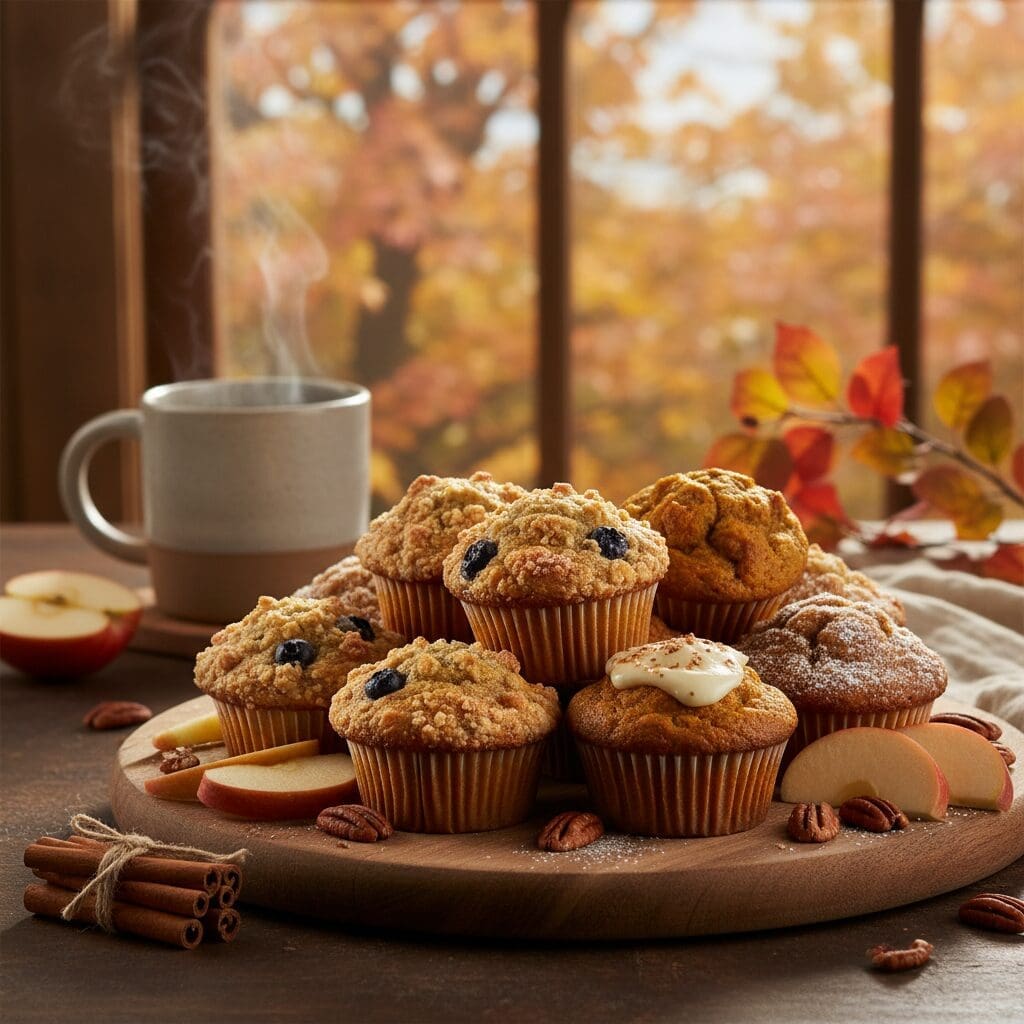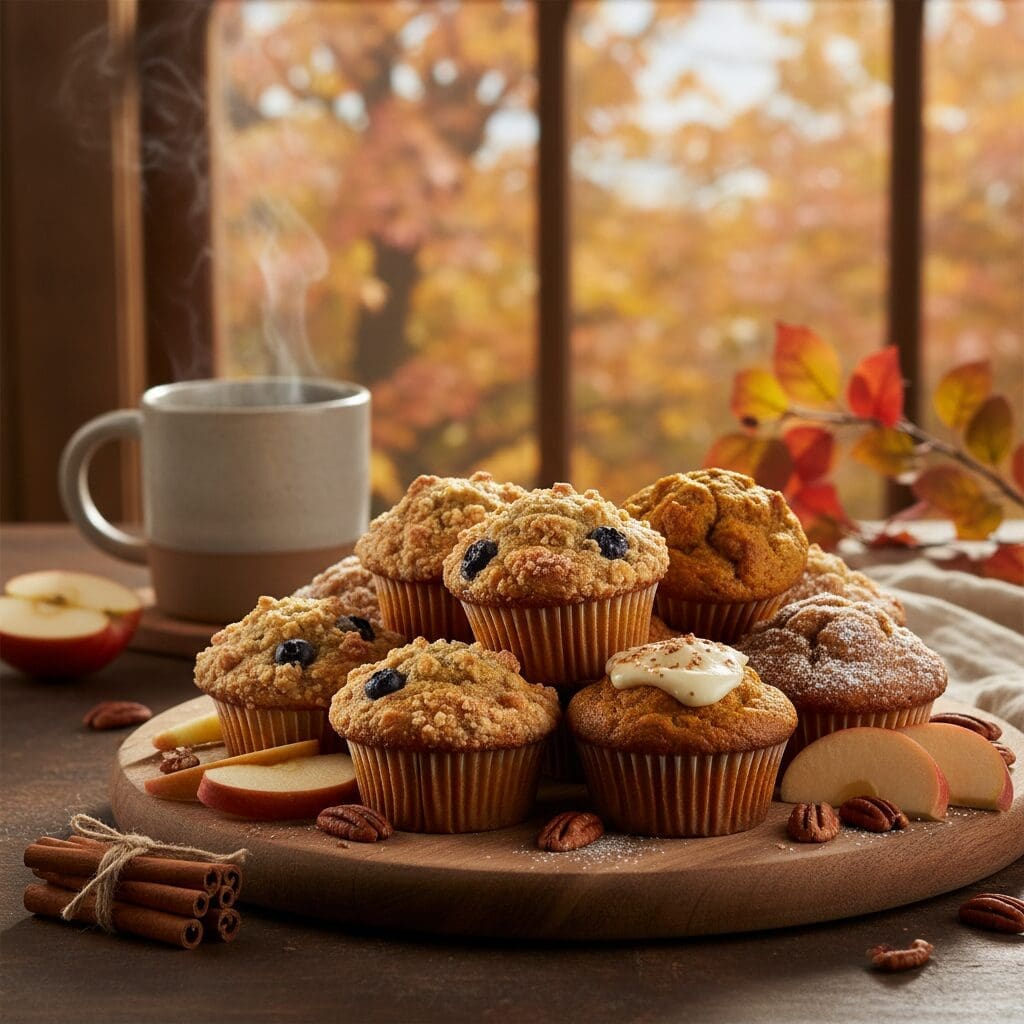The Softest Vegan Hot Cross Buns You’ll Ever Bake

There’s something uniquely comforting about the scent of spiced sweet dough baking in the oven, especially around Easter. For many, hot cross buns are a cherished tradition, a symbol of the season.
But creating a vegan version that’s just as soft, fluffy, and rich as the original can feel like a challenge. That’s why I developed this recipe.
It’s not just a vegan alternative; it’s an upgrade. These buns are unbelievably tender, packed with juicy raisins and a warm blend of cinnamon, nutmeg, and allspice, then finished with a sticky orange glaze.
This guide will walk you through every step to ensure your baking project is a delicious success, creating a new tradition you’ll look forward to year after year.
Why This Recipe Guarantees Perfect Buns

Baking is a science, and this recipe is built on a few key principles to ensure a foolproof, fluffy result every time. We’re not just mixing ingredients; we’re creating the perfect environment for them to shine.
- The ‘Tandem’ Rise Method: We use instant yeast which works faster and more reliably than active dry yeast. This, combined with a slightly sticky dough, creates a powerful initial rise and a beautiful ‘oven spring’, resulting in a lighter, airier crumb. The stickiness indicates high hydration, which is the secret to a moist bun that stays fresh longer.
- A Double Glaze for a Signature Finish: Most recipes feature one glaze, but our method uses two. First, a simple sugar syrup is brushed over the hot buns right out of the oven. This absorbs into the surface, creating that classic sticky, bakery-style top and locking in moisture. The second, a thicker orange-vanilla icing, is piped on once they’ve cooled slightly, providing a decorative finish and a burst of fresh flavor.
- Enriched Dough for a Tender Crumb: The addition of vegan butter and soy milk ‘enriches’ the dough. Fats and proteins interfere with gluten development just enough to create a soft, tender crumb rather than a chewy, bread-like texture. Research from food scientists confirms that fats coat flour proteins, limiting gluten strand formation, which is key for soft rolls.
Getting the Dough Just Right

The foundation of any great bun is the dough. Don’t be intimidated by the process; it’s simpler than you think.
Start by warming your soy milk to about 110°F (43°C)—warm to the touch, but not hot. This is the ideal temperature to activate the yeast without harming it.
In a large bowl (or the bowl of your stand mixer), combine the flour, instant yeast, sugar, spices, and salt. Whisking them together ensures everything is evenly distributed.
Now, add the warmed milk, softened vegan butter, raisins, and orange zest. Using a dough hook on low speed, mix for about 5-7 minutes.
If mixing by hand, stir until a shaggy dough forms, then knead on a lightly floured surface for 10 minutes. The goal is a dough that’s smooth, elastic, and slightly sticky.
It should pull away from the sides of the bowl but still stick a little to the bottom. This slight tackiness is your friend—it promises a soft, moist bun.
Resist the urge to add too much extra flour, which can lead to dry, dense results.
The Magic of the First Rise

Once your dough is perfectly kneaded, it’s time for the first rise. This is where the yeast gets to work, fermenting the sugars in the flour and producing carbon dioxide gas.
These gas bubbles are what create the bun’s light, airy texture. Place the dough in a large, lightly oiled bowl.
The oil prevents a crust from forming, which could inhibit the rise. Cover the bowl with plastic wrap or a damp tea towel and place it in a warm, draft-free spot.
A turned-off oven with the light on is often a perfect environment. Let it rise for about 30-45 minutes.
The goal isn’t just about time; you’re looking for the dough to double in size. A simple way to check is the ‘poke test’: if you poke the dough gently with a floured finger and the indentation remains, it’s ready.
Shaping Your Buns for a Perfect Bake

After the first rise, gently punch the dough down to release the air. Turn it out onto a lightly floured surface and divide it into 15 equal pieces.
A kitchen scale is your best tool for ensuring uniformly sized buns that bake evenly. To shape each bun, take a piece of dough and gently pull the edges downwards and tuck them underneath, creating a smooth, taut surface on top.
Roll the ball between your cupped hand and the work surface to seal the bottom. This technique, detailed by baking experts at King Arthur Baking, creates surface tension that helps the buns rise upwards in the oven, giving them that classic dome shape.
Place the shaped buns into a greased 9×13 inch pan, nestled right next to each other. This encourages them to rise upwards rather than outwards, a method known as ‘proofing in a cluster’.
The Second Rise and Baking to Golden Perfection

Cover the pan with a clean tea towel and let the buns have their second, shorter rise for about 30 minutes. They won’t double in size this time but will look noticeably puffier.
While they rise, preheat your oven to 350°F (175°C). Baking them at this moderate temperature ensures they cook through without burning the tops.
Bake for 20-25 minutes, or until the tops are a rich golden brown. The internal temperature should be around 190°F (88°C) if you use a thermometer.
As soon as you pull them from the oven, it’s time for that first magical glaze. While the buns are still hot, brush them generously with the simple sugar syrup you prepared.
You’ll hear a satisfying sizzle as the hot syrup hits the buns, creating that irresistible sticky finish.
Piping the Crosses and Serving

Let the buns cool in the pan for about 20 minutes before adding the final touch. This is important—if you pipe the icing on while they’re too hot, it will melt and run.
While they cool, prepare your orange glaze. Whisk together the powdered sugar, softened vegan butter, vanilla, and a tablespoon or two of fresh orange juice until you have a smooth, thick but pipeable consistency.
Transfer the icing to a piping bag with a small round tip, or simply use a zip-top bag with the corner snipped off. Pipe a straight line down the center of each row of buns, then turn the pan and pipe lines across in the other direction to form the iconic crosses.
These buns are best served warm, on the day they’re baked, perhaps with a generous smear of vegan butter.
Expert Tips and Common Questions

Even the best bakers have questions. Here are some tips and answers to common issues to ensure your hot cross buns are perfect.
My dough didn’t rise. What happened?
This is usually due to one of three things: expired yeast, milk that was too hot (which kills the yeast), or a rising environment that was too cold. Always check the expiration date on your yeast and test your milk temperature. Find a cozy, warm spot in your house for the dough to proof.
Can I make this recipe gluten-free?
While I haven’t tested a gluten-free version extensively, your best bet would be a high-quality, 1-to-1 gluten-free all-purpose flour blend that contains xanthan gum. Be aware that GF dough has a different, stickier texture and may not rise as high, resulting in a denser bun.
What other fruits or spices can I use?
Feel free to customize! You can swap raisins for currants, chopped dried apricots, or even vegan chocolate chips. If you’re a fan of chocolate in your baking, you will love our recipe for the best vegan chocolate zucchini muffins. For spices, a pinch of cardamom or ginger would be a lovely addition to the existing blend.
Can I prepare the dough ahead of time?
Yes. After the first rise, you can cover the dough tightly and refrigerate it overnight. The next day, let it sit at room temperature for about 30-45 minutes before shaping, then proceed with the second rise and baking. The flavor may even be slightly more developed.
How to Store, Freeze, and Reheat Your Buns

These buns are at their absolute best the day they are baked, but they can be stored properly to enjoy later.
- Room Temperature: Store in an airtight container at room temperature for up to 3 days. The glaze will keep them from drying out too quickly.
- Refrigerating: For longer storage, you can refrigerate them for up to 5 days. Note that refrigeration can sometimes make bread stale faster, so reheating is recommended.
- Freezing: For long-term storage, freezing is the best option. It’s best to freeze them before applying the final piped cross. Let the buns cool completely, then wrap them tightly in plastic wrap and place them in a freezer-safe bag. They will keep for up to 3 months.
- Reheating: To bring back that ‘freshly-baked’ softness, warm a bun in the microwave for 15-20 seconds or in a 300°F (150°C) oven for 5-7 minutes. If they were frozen, let them thaw at room temperature for an hour before reheating. You can then pipe on a fresh cross glaze if desired.
Conclusion
Baking these vegan hot cross buns is more than just following a recipe; it’s about creating a moment of warmth and tradition in your own kitchen. With their soft, pillowy texture and perfect balance of sweet and spice, they are a testament to how delicious and satisfying vegan baking can be. If you’re looking for other impressive dishes to round out your Easter menu, our vegan pesto pasta salad is a vibrant and crowd-pleasing option.
I hope this guide has not only shown you how to make them but also explained the ‘why’ behind each step, empowering you to bake with confidence. Happy Easter, and happy baking!
